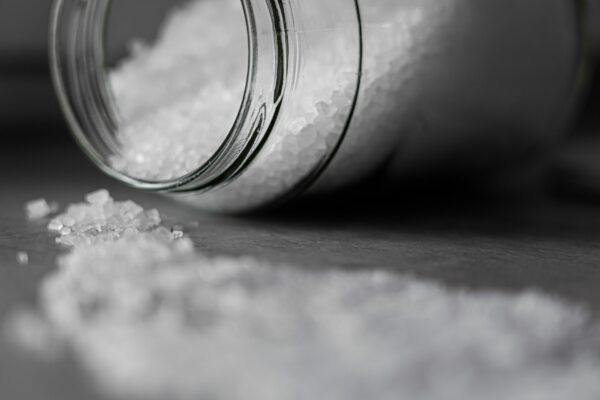Your cart is currently empty!

Resource Details
Precipitation with a pinch of salt
by Alan Doucette, Chief Scientist
You’ve just spent weeks nurturing or gathering your precious protein samples. By your calculations, there should be just enough material to complete your experiments. The workflow begins; an extraction, a purification step, maybe even some trypsin, then off to the mass spectrometry lab. But when the results finally come back, the data are, shall we say, beneath your expectations. But why? Should you blame the low coverage and poor reproducibility on the MS instrument? Or did the problem arise even before the instrument was turned on?
While the answer will not be definitive, one thing you probably already know is that sample preparation is just as important as the instrument choice at the back end of your experiment. Poor extraction and incomplete purification effectively erases all of the efforts you put into obtaining your valuable samples.
This has happened to me, it’s happened to all of us. Ask yourself two SIMPLE questions on your sample preparation:
Do you know your protein RECOVERY?
Do you know your protein PURITY?
There are multiple options when it comes to protein sample preparation. You want something simple: fast, reliable, and easy to use. But what matters even more than that is to ensure that you can isolate your protein in high yield, and free of contaminants. The answer to all of this is the classic technique of solvent precipitation. Before you run away, let’s just take a closer look at this process. You might not realize the incredible potential of this simple approach.
When an organic solvent such as acetone is added to a solution of dissolved proteins, what exactly happens? The answer, believe it or not, depends entirely on what else is in the solution. We’ll get to that in a minute. But let’s look at the protein solution first. Perhaps these proteins were aided to dissolve by adding a surfactant, such as SDS. Good choice! After all, almost nothing beats SDS when it comes to dissolving proteins. SDS can therefore be used to aid the initial extraction step. Of course, if mass spectrometry is your end goal, this SDS will need to be eliminated. So maybe you avoided SDS in the first place. Maybe there is very little in your solution besides protein and water.
Now let’s add the acetone. What happens next is that the addition of acetone causes individual proteins to stack together and ultimately precipitate. The conventional explanation for this is that the water shell surrounding the protein is being whittled away by the addition of organic solvent. Essentially, less water means less shielding of attractive forces, and the proteins come together. At least, that’s what we were hoping. But sometimes things don’t go as planned. Protein precipitation was long considered a “hit-or-miss” approach to recover proteins. Some days it works, and other days (or other protein samples), it’s a different story.
Now, why would a process be so inherently variable? Unless of course, not all the variables are controlled. Here’s where the question of what else is in solution really matters. Turns out, an organic solvent alone is insufficient to precipitate proteins. You can try it for yourself. Take a pure protein (BSA is a good choice) and dissolve it in pure water. Now start adding acetone. You would expect that, beyond a critical amount of solvent, the protein will precipitate. But you will find that it does not. In fact, very few proteins will – even in 90% solutions of acetone. But here’s where it gets interesting. Try adding a pinch of salt, and watch what happens.
At least by these observations, solvent-based protein precipitation needs a little bit of salt to work. More specifically, it needs “ions” in solution. That SDS you added to help extract your proteins will also work wonders to induce precipitation when combined with acetone.
I’m sure you’re asking why? So are we in fact. And that’s one of the beautiful aspects of science – that we are allowed to always ask questions. Protein precipitation might appear to be fully understood. But we think we are just scratching the surface as to what it can do. FYI: We think that salt ions act as ion pairing agents, and cancel the intrinsic protein charge when placed in organic solvents. No charge = no repulsion, which allows hydrophobic forces to take over. But that’s just a thought.
One thing we do know for sure is that when done properly, solvent precipitation provides consistent high recovery, for all proteins in your sample.
And that SDS you added a while ago? You don’t need to worry about that because it stays in solution as the proteins crash out. Precipitated proteins are of the highest purity, ideal for mass spectrometry analysis.
So, back to your data outcomes that don’t meet expectations. Sample prep does matter. And when it comes to recovery and purity, solvent precipitation is a good way to get what you need for better outcomes.
References/Sources
A. M. J. Crowell , M. J. Wall, A. A. Doucette. “Maximizing Recovery of Water-Soluble Proteins Through Acetone Precipitation” Anal. Chim. Acta 2013;796:48-54. doi: 10.1016/j.aca.2013.08.005.